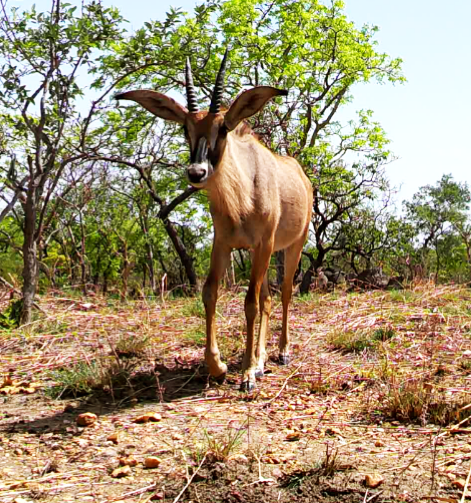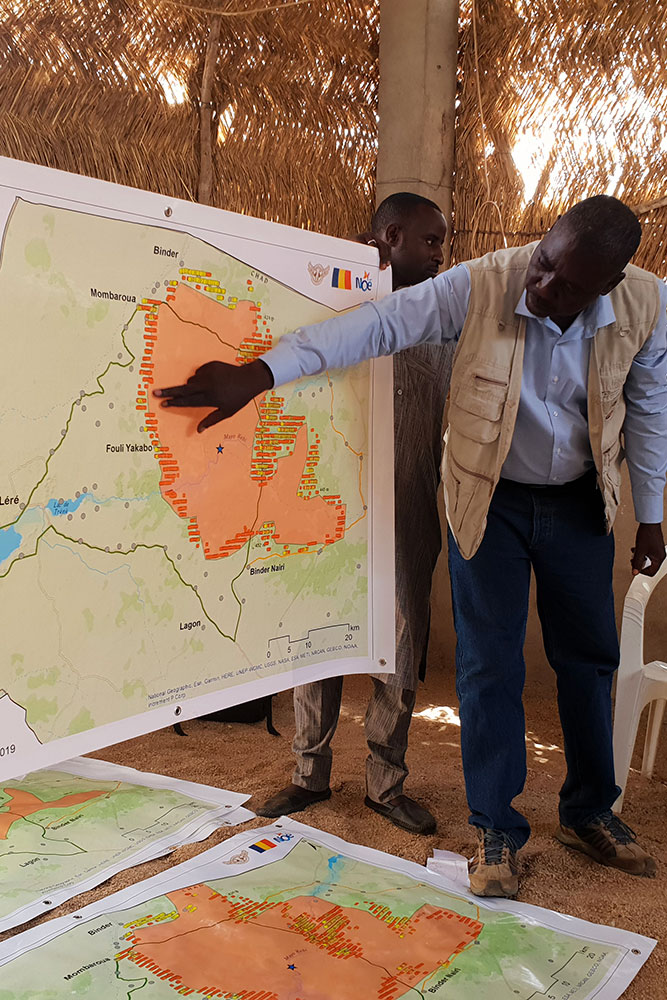
Miniature Africa (from wetlands and falls, to open forest and savannah)
The Binder-Léré Wildlife Reserve is located in the southwest of Chad, near the border with Cameroon. It covers an area of 135,000 hectares marking the transition between the sudanese and the sahelian ecosystems. The reserve was created in May 1974 by presidential decree. In 2001, the site was classified as a Wetland of International Importance (Ramsar Site) and designated as an Important Bird Area (IBA). The reserve holds a unique variety of wetlands as well as the country’s largest waters falls, the “Gauthiot Falls”, with a brutal drop of 45 meters. The falls constitute an insurmountable natural barrier for fish species from the Niger basin to the Chad basin. Apart from wetlands, Binder-Léré harbours open forest and gallery forests populated with large sudanese savannah trees and perennial grass. On top of that, the area contains large floodplains which serve as spawning grounds and nursery areas for numerous species of fish, as well as two lakes (Léré́ and Tréné) sheltering a rich afro-ethiopian avifauna.

HECTARES
This surface might not seem very large, but it is rare to find 100,000 hectares of intact sahelian ecosystem today
HIPPOS
Their excrement fertilizes the aquatic ecosystem and thus boosts the growth of the fish stocks for the fishermen
MANATEES
The Mami Wata is a goddess of the sea and a symbol of wealth and beauty in many African legends.
ELEPHANTS
The third largest population in Chad and the second largest viable population in a protected area
ORIBI
A small antelope of 50–67 cm and 12–22 kg found in eastern, southern and western Africa
PEOPLE AROUND THE RESERVE
Including 3 customary chiefdoms: the Gong (traditional Moundang chief) of Léré, the Gong of Lagon and the Lamido (traditional Fulani chief) of Binder.
km FROM CAMEROON
Movement of people but also migration of animals crossing the border is common and an additional management challenge.
KORDOFAN GIRAFFES
This a relict population of this critically endangered subspecies of giraffe that needs close monitoring to ensure its survival.
Iconic Sahelian Wildlife
The most unexpected species among the emblematic fauna of this sahelian region is maybe the manatee, which can be found in the lakes. The reserve is also home to giraffe, hippopotamus, roan antelope, bohor reedbuck, oribi and Grimm’s duiker. Since the end of 2006, the ecosystem of the Binder-Léré Wildlife Reserve has hosted the third largest elephant population in Chad, with approximately 125 individuals.
Due to uncontrolled poaching and loss of habitat over the years, most species in the reserve have decreased to alarming numbers and a swift intervention is needed for their recovery.

Our vision for the future
The vision for the park is to restore and protect wildlife and their habitat along with the development of the local communities depending on them.
In order to obtain this, protection is essential, so Parcs de Noé is currently ensuring:
- Regular aerial surveillance with Wings for Conservation Foundation
- Law enforcement support to existing Law enforcement agents
Parcs de Noé is committed to:
- Developing park’s infrastructures
- Setting up an inclusive surveillance system together with the communities, including an anti-poaching unit, aerial surveillance, a control room connected with field teams and key species equipped with GPS transmitters, to monitor and maintain their numbers and ecosystems
- Organizing wildlife translocation operations to repopulate the area


Livelihood and sustainability
The 70,000 people neighbouring the reserve are being engaged by :
- Assimilating communities as park staff and in park governance systems
- Developing a Human-Wildlife Conflict plan
- Setting up Green Value Chains (agriculture) and structuring traditional fisheries
- Supporting the agro-pastoral sector and transhumance as a complement to the development of a land-use plan
- Providing environmental education
- Improving basic social services (health, water, etc.)
To ensure more sustainable income for the Reserve in the future, Parcs de Noé aims at:
- Developing the touristic potential by attracting national and international operators and investors
- Involving agroindustry through a biodiversity compensation scheme




